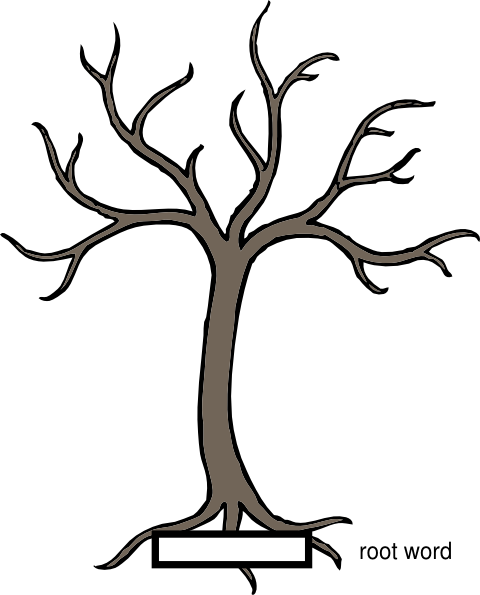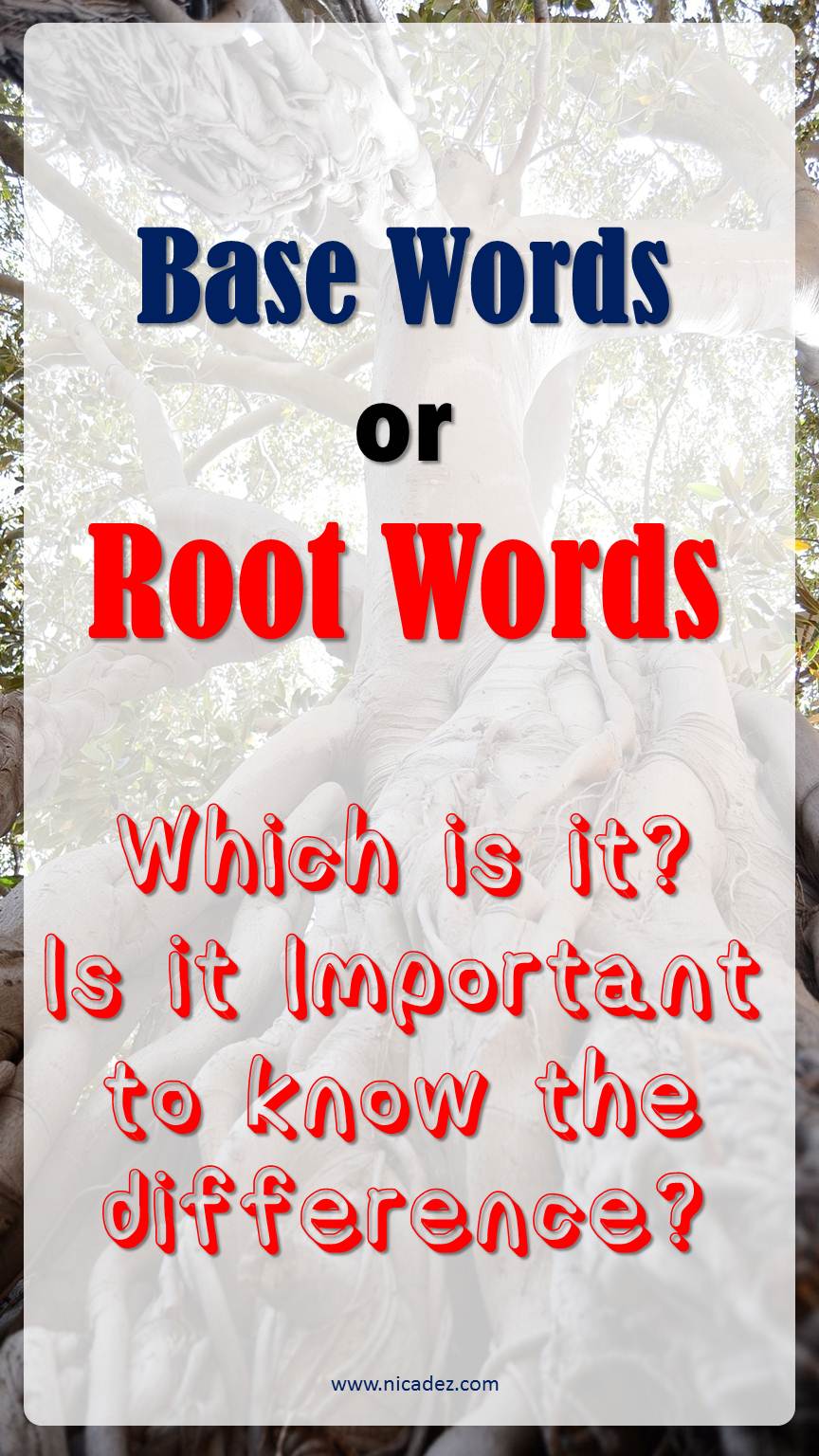
Since this dictionary went up, it has benefited from the suggestions of dozens of people I have never met, from around the world.
Root word vs word root full#
The basic sources of this work are Weekley's "An Etymological Dictionary of Modern English," Klein's "A Comprehensive Etymological Dictionary of the English Language," "Oxford English Dictionary" (second edition), "Barnhart Dictionary of Etymology," Holthausen's "Etymologisches Wörterbuch der Englischen Sprache," and Kipfer and Chapman's "Dictionary of American Slang." A full list of print sources used in this compilation can be found here.

This should be taken as approximate, especially before about 1700, since a word may have been used in conversation for hundreds of years before it turns up in a manuscript that has had the good fortune to survive the centuries. The dates beside a word indicate the earliest year for which there is a surviving written record of that word (in English, unless otherwise indicated). Etymologies are not definitions they're explanations of what our words meant and how they sounded 600 or 2,000 years ago. In addition, the ability to decode unfamiliar language is crucial in the unseen element of GCSE English papers, where students encounter new and unknown language.This is a map of the wheel-ruts of modern English. Morphology is key to narrowing word gaps, as it gives learners with smaller vocabularies the tools to break language down into composite parts. These aren’t the only reasons to teach morphology. Prepare students for the next stage of their education.Create an appreciation and enjoyment of the English language and written works.Improve literacy by enhancing understanding of complex texts across the curriculum.Foster independence and confidence in decoding new words.Improve spelling – from helping learners use the correct spelling of a prefix (like ‘in’ versus ‘im’) to spelling complex roots such as ‘psych’ or ‘socio’.Widen vocabulary – especially Tier 2 and 3 terms critical to academic success.


This means an understanding of morphology can: This illuminates new concepts and improves literacy across and beyond the curriculum. As they independently decipher unfamiliar words, they unlock new vocabulary. Knowing the most common word roots empowers students of all abilities to break words down and decode their meanings. Using what you learned from the words biography and morphology, what do you think biology means? Why is morphology key to literacy? In this case, the shape in question is the construction of words. From this starting point, it is much easier for the learner to access the context this new word has been used in, and develop their confidence exploring new, ambitious vocabulary.Įven the word morphology itself can be broken down: the root word, morph, means shape, and the suffix ology means 'to study' - together, the definition of morphology is the study of shapes.

For example, if a learner is encountering the word autobiography for the first time, and they don't know what it means, but they do know that auto means 'self', bio means 'life' and graphy means 'story', you can get an idea that an autobiography is a self-life-story of some kind. When broken down into their roots and affixes, it becomes much easier to understand unfamiliar vocabulary.


 0 kommentar(er)
0 kommentar(er)
